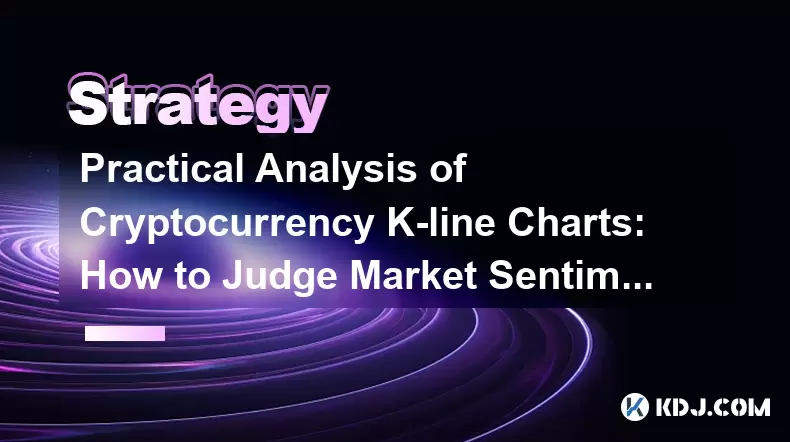-
 Bitcoin
Bitcoin $109,498.1988
-0.01% -
 Ethereum
Ethereum $2,792.8708
4.19% -
 Tether USDt
Tether USDt $1.0001
-0.03% -
 XRP
XRP $2.2924
0.08% -
 BNB
BNB $668.8607
0.75% -
 Solana
Solana $164.6572
3.56% -
 USDC
USDC $0.9998
0.03% -
 Dogecoin
Dogecoin $0.1974
2.17% -
 TRON
TRON $0.2906
1.55% -
 Cardano
Cardano $0.7186
1.86% -
 Hyperliquid
Hyperliquid $41.8112
5.98% -
 Sui
Sui $3.4604
1.90% -
 Chainlink
Chainlink $15.2189
5.32% -
 Avalanche
Avalanche $22.1679
1.95% -
 Bitcoin Cash
Bitcoin Cash $441.4012
4.09% -
 Stellar
Stellar $0.2807
2.17% -
 UNUS SED LEO
UNUS SED LEO $8.9729
-1.31% -
 Toncoin
Toncoin $3.2946
-0.37% -
 Shiba Inu
Shiba Inu $0.0...01322
2.15% -
 Hedera
Hedera $0.1794
0.26% -
 Litecoin
Litecoin $91.8200
1.62% -
 Polkadot
Polkadot $4.2591
2.99% -
 Monero
Monero $340.9564
2.28% -
 Ethena USDe
Ethena USDe $1.0007
-0.01% -
 Bitget Token
Bitget Token $4.8564
2.48% -
 Dai
Dai $0.9998
0.00% -
 Pepe
Pepe $0.0...01273
0.86% -
 Uniswap
Uniswap $8.3403
16.62% -
 Pi
Pi $0.6407
0.64% -
 Aave
Aave $311.0271
6.68%
How To Calculate Absolute Return In Low-Risk Assets?
For low-risk assets, calculating absolute return using the formula (Ending Value / Beginning Value - 1) provides a measure of actual investment gain, independent of market performance.
Nov 01, 2024 at 01:10 pm

How to Calculate Absolute Return in Low-Risk Assets
1. Definition
Absolute return is a performance measure that reflects the actual return an investor has earned over a specific period, regardless of the market's performance. Low-risk assets are typically considered to be those that have a lower volatility than the overall market, such as bonds or money market accounts.
2. Formula
The formula for calculating absolute return is:
Absolute Return = Ending Value / Beginning Value - 13. Example
Let's assume you invest $1,000 in a bond that matures in one year and pays an annual interest rate of 5%. At the end of the year, the bond is worth $1,050.
Absolute Return = $1,050 / $1,000 - 1 = 0.05This means that you have earned an absolute return of 5% over the one-year period.
4. Considerations
When calculating absolute return for low-risk assets, it is important to consider the following:
- The holding period: Absolute return is typically calculated over a specific holding period, such as one year or five years.
- Inflation: Absolute return should be adjusted for inflation to provide a more accurate measure of performance.
- Fees: Any fees or expenses associated with the investment should be taken into account.
5. Advantages
Absolute return can be a useful performance measure for low-risk assets because it:
- Provides a clear and concise way to track performance over time.
- Allows comparison of different low-risk investment options.
- Facilitates risk-adjusted decision-making.
6. Limitations
Absolute return does have some limitations, including:
- It does not consider the relative performance of the investment compared to other asset classes or benchmarks.
- It can be misleading if the holding period is too short.
- It does not account for the investor's risk tolerance.
Conclusion
Absolute return is a valuable performance measure for low-risk assets. By understanding how to calculate it and its advantages and limitations, investors can make more informed investment decisions.
Disclaimer:info@kdj.com
The information provided is not trading advice. kdj.com does not assume any responsibility for any investments made based on the information provided in this article. Cryptocurrencies are highly volatile and it is highly recommended that you invest with caution after thorough research!
If you believe that the content used on this website infringes your copyright, please contact us immediately (info@kdj.com) and we will delete it promptly.
- John Squire suggests SEC might settle Ripple case by accepting XRP instead of cash.
- 2025-06-11 02:55:13
- Bitcoin (BTC) bulls are back in control after US GDP data reveals the economy shrank in Q1 2025
- 2025-06-11 02:55:13
- Coinbase Launches Bitcoin-Backed Lending Feature, Excluding New York
- 2025-06-11 02:50:12
- Kedarnath Dham doors will open on May 2, Doli Yatra started on April 28
- 2025-06-11 02:50:12
- US Government Could Be Preparing to Make a Major Bitcoin Move, Potentially Investing Up to $100 Billion
- 2025-06-11 02:45:12
- US Government Could Be Preparing to Make a Major Bitcoin Move, Potentially Investing Up to $100 Billion
- 2025-06-11 02:45:12
Related knowledge

Cryptocurrency K-line Chart Interpretation Guide: How Novices Can Quickly Master the Basics of Technical Analysis
Jun 10,2025 at 08:56pm
Understanding the Basics of K-line ChartsK-line charts, also known as candlestick charts, are one of the most widely used tools in cryptocurrency trading for analyzing price movements. Each K-line represents a specific time period and shows the opening, closing, high, and low prices during that interval. For novices, grasping how to read these elements ...

Practical Analysis of Cryptocurrency K-line Charts: How to Judge Market Sentiment through Charts
Jun 10,2025 at 09:42pm
Understanding the Basics of Cryptocurrency K-line ChartsCryptocurrency K-line charts, also known as candlestick charts, are essential tools for analyzing price movements in the crypto market. Each candlestick represents a specific time frame, such as 1 minute, 5 minutes, or even daily intervals. The structure of a K-line includes four key data points: o...

Technical Analysis of Crypto K-line Charts: A Comprehensive Analysis from Basic to Advanced
Jun 11,2025 at 02:50am
Understanding the Basics of K-line ChartsK-line charts, also known as candlestick charts, are essential tools in the technical analysis of cryptocurrency markets. Each candlestick represents a specific time period and provides four key data points: open, high, low, and close prices. These elements allow traders to interpret market sentiment and potentia...

How to Analyze the Crypto Market with K-line Charts: A Complete Guide for Beginner Traders
Jun 10,2025 at 11:49pm
Understanding the Basics of K-line Charts in Cryptocurrency TradingK-line charts, also known as candlestick charts, are one of the most widely used tools for analyzing cryptocurrency price movements. Each candlestick represents a specific time interval and provides information on the open, high, low, and close prices during that period. For beginner tra...

From Beginner to Master: A Complete Learning Guide for Crypto K-line Chart Analysis
Jun 10,2025 at 11:36pm
Understanding the Basics of K-line ChartsK-line charts, also known as candlestick charts, are a fundamental tool in cryptocurrency trading. Originating from Japan, these charts provide detailed insights into price movements over specific time intervals. Each K-line represents four key data points: the opening price, closing price, highest price, and low...

The continuous pattern of the three rising methods in short-term
Jun 05,2025 at 02:49am
The continuous pattern of the three rising methods in short-term trading within the cryptocurrency market is a technical analysis pattern that traders often use to identify potential bullish trends. This pattern, also known as the 'three advancing white soldiers,' is characterized by three consecutive bullish candles, each closing higher than the previo...

Cryptocurrency K-line Chart Interpretation Guide: How Novices Can Quickly Master the Basics of Technical Analysis
Jun 10,2025 at 08:56pm
Understanding the Basics of K-line ChartsK-line charts, also known as candlestick charts, are one of the most widely used tools in cryptocurrency trading for analyzing price movements. Each K-line represents a specific time period and shows the opening, closing, high, and low prices during that interval. For novices, grasping how to read these elements ...

Practical Analysis of Cryptocurrency K-line Charts: How to Judge Market Sentiment through Charts
Jun 10,2025 at 09:42pm
Understanding the Basics of Cryptocurrency K-line ChartsCryptocurrency K-line charts, also known as candlestick charts, are essential tools for analyzing price movements in the crypto market. Each candlestick represents a specific time frame, such as 1 minute, 5 minutes, or even daily intervals. The structure of a K-line includes four key data points: o...

Technical Analysis of Crypto K-line Charts: A Comprehensive Analysis from Basic to Advanced
Jun 11,2025 at 02:50am
Understanding the Basics of K-line ChartsK-line charts, also known as candlestick charts, are essential tools in the technical analysis of cryptocurrency markets. Each candlestick represents a specific time period and provides four key data points: open, high, low, and close prices. These elements allow traders to interpret market sentiment and potentia...

How to Analyze the Crypto Market with K-line Charts: A Complete Guide for Beginner Traders
Jun 10,2025 at 11:49pm
Understanding the Basics of K-line Charts in Cryptocurrency TradingK-line charts, also known as candlestick charts, are one of the most widely used tools for analyzing cryptocurrency price movements. Each candlestick represents a specific time interval and provides information on the open, high, low, and close prices during that period. For beginner tra...

From Beginner to Master: A Complete Learning Guide for Crypto K-line Chart Analysis
Jun 10,2025 at 11:36pm
Understanding the Basics of K-line ChartsK-line charts, also known as candlestick charts, are a fundamental tool in cryptocurrency trading. Originating from Japan, these charts provide detailed insights into price movements over specific time intervals. Each K-line represents four key data points: the opening price, closing price, highest price, and low...

The continuous pattern of the three rising methods in short-term
Jun 05,2025 at 02:49am
The continuous pattern of the three rising methods in short-term trading within the cryptocurrency market is a technical analysis pattern that traders often use to identify potential bullish trends. This pattern, also known as the 'three advancing white soldiers,' is characterized by three consecutive bullish candles, each closing higher than the previo...
See all articles

























































































